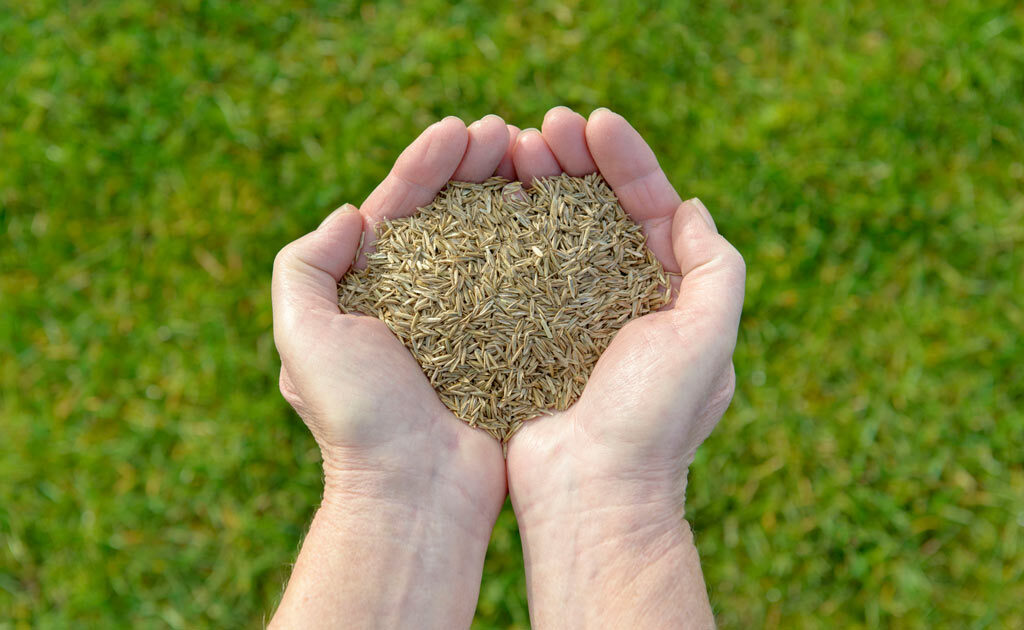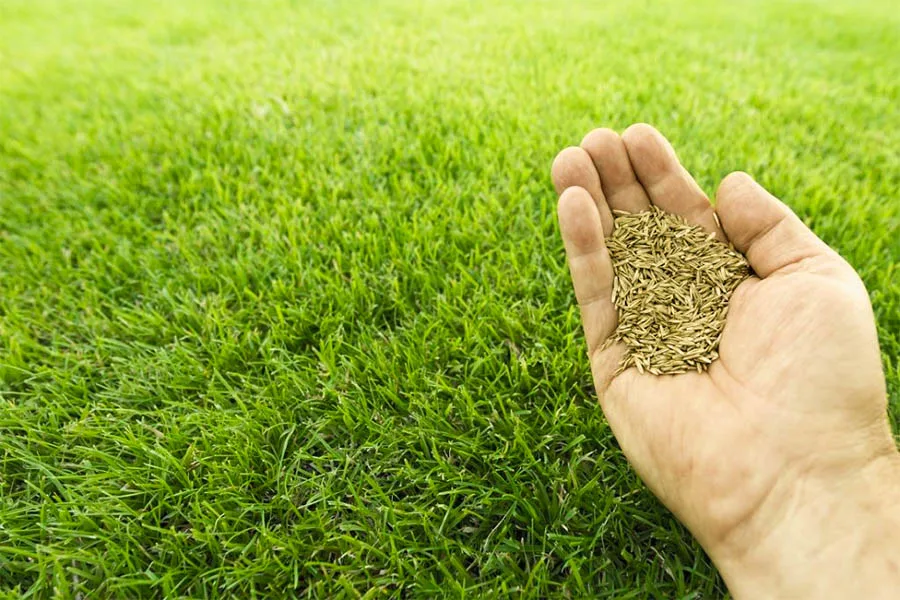A lush, green lawn is the pride of any garden lover. But over time, even the healthiest lawns can develop thin patches, bare spots, or areas where grass struggles to grow. Whether it’s due to foot traffic, weather damage, pests, or simply aging grass, overseeding — planting grass seed on an existing lawn — is a simple, effective way to rejuvenate your yard without tearing everything up and starting from scratch.
In this detailed guide, we’ll walk you through how to plant grass seed on an existing lawn, covering everything from choosing the right grass seed to proper soil preparation and maintenance tips for long-lasting results.
Why Overseed Your Lawn?

Overseeding involves spreading new grass seed directly over your current lawn to thicken the turf, fill in bare patches, and improve its overall health and appearance.
Benefits of overseeding:
- Thicker, greener lawn
- Improved resistance to diseases, pests, and drought
- Enhanced curb appeal
- Reduced weed growth by crowding them out
- Filling patchy areas without a full lawn replacement
It’s one of the easiest, most affordable ways to give your lawn new life.
When Is the Best Time to Overseed?
Timing is crucial for overseeding success.
The ideal time depends on your region and grass type:
| Grass Type | Best Season to Overseed |
|---|---|
| Cool-season grasses (like fescue, bluegrass, ryegrass) | Early fall (September–October) or early spring |
| Warm-season grasses (like Bermuda, zoysia, centipede) | Late spring to early summer |
Fall is typically preferred for cool-season grasses because:
- Soil is still warm, encouraging fast seed germination.
- Cooler air temperatures reduce stress on young seedlings.
- Less competition from weeds.
Choosing the Right Grass Seed

Select grass seed that:
- Matches your existing lawn type (if you know it)
- Is suited to your region’s climate
- Thrives in your lawn’s sun and shade conditions
- Has disease-resistant and drought-tolerant qualities
Tip: Many garden centers sell blends labeled “sun & shade mix,” “high-traffic mix,” or “drought-tolerant mix” tailored to specific lawn needs.
Tools and Materials You’ll Need
- Grass seed
- Lawn mower
- Metal rake or dethatcher
- Lawn aerator (optional but recommended)
- Seed spreader (hand-held or push)
- Garden hose with spray nozzle or sprinkler
- Starter fertilizer (optional)
- Topsoil or compost (for patchy areas)
Step-by-Step: How to Plant Grass Seed on an Existing Lawn

Step 1: Mow the Lawn Short
Before overseeding, mow your lawn to about 1.5–2 inches tall.
This prevents tall grass from shading new seeds and helps them reach the soil.
Tip: Collect clippings to avoid covering the soil surface.
Step 2: Rake or Dethatch
Use a metal rake or dethatching rake to loosen the soil surface and remove dead grass, leaves, and debris.
This creates openings for seed-to-soil contact — crucial for germination.
If your lawn has heavy thatch (a dense, spongy layer of roots and debris), use a dethatching machine or hire a pro to dethatch it before seeding.
Step 3: Aerate (Optional but Highly Recommended)
Core aeration involves removing small plugs of soil to reduce compaction and create holes for seeds to settle in.
Benefits:
- Improves seed-to-soil contact
- Allows better water and nutrient absorption
- Boosts overall lawn health
You can rent a lawn aerator or hire a service if needed.
Step 4: Spread the Grass Seed
Use a broadcast or drop spreader for even distribution:
- Set the spreader according to the seed bag instructions.
- Walk in a consistent pattern, overlapping slightly for complete coverage.
For small areas or patches, hand-spreading works fine.
Tip: Overseed at the recommended rate for overseeding, not new lawn establishment (check the seed bag).
Step 5: Apply Starter Fertilizer (Optional)
A starter fertilizer rich in phosphorus encourages strong root growth for new seedlings.
Use one labeled safe for new grass, following the recommended application rate.
Avoid using weed-and-feed products — they can harm tender grass seedlings.
Step 6: Lightly Rake and Topdress
Gently rake the lawn to help seeds settle into the soil, covering them lightly without burying too deep.
For thin or bare patches:
- Topdress with a thin layer of compost or fine topsoil (¼ inch) over the seeded area.
- This helps retain moisture and improves germination.
Step 7: Water Thoroughly
Immediately after seeding:
- Water the entire area lightly but thoroughly until the topsoil is moist.
For the next 2–3 weeks:
- Water once or twice daily, keeping the soil consistently moist but not waterlogged.
- Use a gentle spray setting or sprinkler to avoid washing away seeds.
Once seedlings reach 2 inches tall, reduce watering to every other day, then gradually to your regular schedule.
Post-Planting Care Tips

- Avoid heavy foot traffic on new grass until it’s well established (4–6 weeks).
- Hold off mowing until seedlings are 3–4 inches tall.
- Use a sharp mower blade and cut no more than ⅓ of the grass height at a time.
- Resume fertilizing about 6–8 weeks after overseeding with a balanced lawn fertilizer.
- Continue regular watering and mowing throughout the season.
Common Overseeding Mistakes to Avoid
- Not preparing the soil: Seed won’t germinate properly on compacted or thatch-covered soil.
- Skipping watering: Dry soil means poor germination.
- Overwatering: Leads to seed rot or fungus.
- Using too much seed: Can cause overcrowding and weak seedlings.
- Ignoring timing: Seeding in the wrong season reduces success rates.
How Long Does It Take for Grass Seed to Grow?
Germination times vary by grass type and weather:
| Grass Type | Germination Time |
|---|---|
| Ryegrass | 5–10 days |
| Fescue | 7–14 days |
| Bluegrass | 14–30 days |
| Bermuda/Zoysia | 10–30 days |
Expect to see noticeable new growth within 2–3 weeks for most lawns.
Final Thoughts

Overseeding an existing lawn is one of the simplest, most effective ways to breathe new life into your yard. With proper timing, good preparation, and attentive aftercare, you can transform a tired, patchy lawn into a thick, healthy, emerald-green carpet.
Whether you’re filling bare spots, refreshing high-traffic areas, or just want a lusher lawn, overseeding is an affordable DIY lawn care task that pays off with long-term beauty and durability.
So grab your seed spreader — your revitalized, vibrant lawn awaits!





Leave A Comment